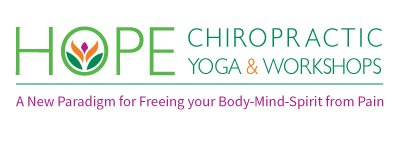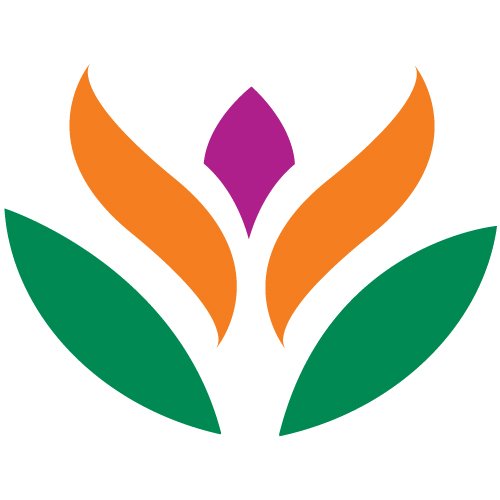The Sacred Psoas: Muscle of the Soul
By Dr Keneen Hope McNiven D.C.
Founder of Hope Chiropractic and Yoga
Developer of Grace, Gravity, Gaia and Grit- Posture Correction and Pain Relief Workshops
“THE PSOAS MUSCLE IS THE MAIN MUSCLE THAT RESPONDS TO THE SYMPATHETIC NERVOUS SYSTEM DURING THE FLIGHT, FIGHT, FREEZE RESPONSE IN THE BODY. WHEN STARTLED OR UNDER MENTAL OR EMOTIONAL STRESS, THE PSOAS CONTRACTS AND CURLS UP, A LITTLE LIKE A CATERPILLAR POKED BY A STICK.”
– Liz Koch
The Sacred Psoas (pronounced So-Az) is a deeply internal and esoteric muscle that stabilizes the postural and energetic core of the human being. Originating in the mid back proximal to the diaphragm and aorta, this bilateral, fan-like muscle spirals downward along the spinal column, crossing three major joints in the low-back area, including the hips, before inserting at the upper-thigh bone.
Through a lacy fabric of soft tissue fascia this long muscle supports the spine and vital organs including the heart and lungs, as well as pelvic organs including the bladder, bowel and reproductive organs. These fascial threads also extend throughout the nervous system up to the brain and down to the lumbar spinal nerves.
Like two pillars buttressing the spine, the psoas allows us to bend over and pick something up, and initiates walking, running or dancing. All graceful movement and power emanates from this central psoas axis. A healthy psoas promotes good posture, wherein the body is stacked vertically and aligned with gravity from top to bottom. When we have good posture all the muscles of the body are relaxed, because the skeleton and bones bear the brunt of the weight, as they were designed to do. The brain and nervous system function optimally and we enjoy emotional and spiritual wellbeing.
“WHEN ONE TUGS AT A SINGLE THING IN NATURE, HE (SHE) FINDS IT ATTACHED TO THE REST OF THE WORLD” – JOHN MUIR
When the postural core is disrupted by poor habits, such as too much sitting, or defensive “shapes” second to stress or trauma, the psoas muscles will strain under this imbalanced load resulting in a “tug” throughout the brain and entire nervous system. This strain results in a host of ailments including back, hip, groin and knee pain, as well as organ dysfunction including, but not limited to, kidney and adrenal exhaustion. Emotionally we lose our equilibrium and spiritually we feel disconnected from our sacred depths.
It is a natural, involuntary response for the psoas muscle to clamp down and protect our vital organs and ready us to flee, fight, freeze, or duck and dodge a perceived threat.
It is not natural for the sacrosanct psoas to remain chronically tight for months or years after the original stress has long passed. When this happens an exhausting tension pattern wreaks havoc on our health resulting in pain, fatigue, sleep, immune, digestive and mood challenges.
The Psoas Muscle in Flight Response
While humans do need to engage the psoas to run from a real threat, a healthy psoas reverts back to a relaxed state once the danger is over. If the psoas remains guarded, it will activate parts of the brain that result in hyper-vigilance and anxiety. Consequently, the flexor muscles in the front of the body anchor down, resulting in a tightening of the gut, a hunching of the shoulders and a collapsing in the chest and heart. These prolonged postural and psychic distortions incite worry, paranoia and even panic attacks. As the instinctual need for safety and security is a foremost priority, expansive opportunities and healthy challenges are often avoided. Meditation, stillness and rest are especially difficult for the person stuck in a flight response.
The Psoas Muscle in Fight Response
Sometimes the survival-oriented psoas muscle springs into action to “put up our dukes” when an enemy is perceived, but we need to be able to “lay down our arms” once the challenge is over. Our posture reflects this with high tensile tone in the musculature, a jutting head, clenched jaw, puffed up chest and bracing in the hips. If the psoas is unable to settle, it tugs on the entire brain and nervous system and triggers aggression and a cascade of stress hormones resulting in chronic frustration or irritability. It invokes an argumentative skepticism often coupled with a divisive attitude toward others. As this instinctual need for defensiveness is an instinctual priority, it becomes more difficult to relax and embody the tender transparency of our truer nature at the core of our being.
The Psoas Muscle in Freeze Response
If fleeing or fighting are not an option, and no escape is available, the psoas tissue curls up compulsively in an attempt to play dead, like a possum, in the hope that the danger will go away, and to protect the vulnerable “under-belly” of vital organs. If the psoas remains frozen long after the danger is gone, the brain and nervous system also become immobilized and pervasive feelings of overwhelm, hopelessness or depression ensue. The fatigued psoas caves in with a collapsed, low or no muscle tone posture. The shoulders, solar plexus and pelvis all sag, and often the arches of the feet crumble. A habitual procrastinating helplessness results, with a concomitant proclivity towards disassociation, shame and emotional numbness. Unaddressed, the enduring fatigue or pain associated with the freeze response makes the essential strength and courage necessary to overcome obstacles to self-actualization challenging.
The Psoas Free from Flight, Fight Freeze Response
Knowledge is wisdom and understanding and addressing unresolved somatic stress helps liberate the entire body-mind-spirit initiating deep healing and personal transformation. Once healed, this soulful muscle offers the experience of a safe haven within. As the survival instincts relax, our choices, movements and actions emanate from a graceful, grounded and settled core connection to our depths. Feeling free and safe, we become open to embodying more of our essential true nature. Our health, sleep, energy and moods often improve. Rather than living all curled up like a caterpillar, we spread our wings and embody the vast expanse of our sacred true nature.
Healing takes time and does not happen overnight for most of us. Taking a proactive stance to do what you can will empower you to create the momentum needed for healing. It is also important to work with trauma-informed, psoas-savvy therapists, body workers and Chiropractors to help accelerate your healing process.
What you can do:
Avoid sitting for prolonged periods and always sit stacked: with the hips higher than the knees, upper thighs rolled inward and a gentle arch in your low back. Avoid bucket seats that tuck you into a “C” curve. Set a timer to stand, stretch and flex at least once an hour. Open and lengthen the front body frequently.
Avoid excessive biking, running, or sit-ups, as these activities tend to bind and contract the psoas. During breaks, stretch and open the front body.
Walk, run and move from the solar plexus core with a “pendulum-like” swing to the legs as much as possible. The thigh muscles should not initiate movement.
Alignment-based yoga with an experienced teacher who knows the difference between an over-stretched psoas and over-contracted psoas will help. Standing or low-lunge crescents done properly will also help. The thighs must root back, the front body must lengthen and the ribs must stay neutral.
Posture correction work with a professional is important so you can bring proper alignment to your yoga or exercise regimen.
Constructive Rest Position for 10-15 minutes daily effectively releases accumulated stress. Lie on your back with your knees bent onto a couch or chair. Your feet are hip-width apart and relaxed. Your low back is neutral without tuck or arch. This is a being pose, not a doing pose.
Schedule time to slow down the “beast of busy” and truly rest regularly.
With authenticity, acknowledge and release emotions regularly. Breathing with compassionate curiosity into difficult sensations and liberating trapped sound and energy is helpful for your body-mind-spirit.
“When one tugs at a single thing in nature, he/she finds it attached to the rest of the world.”
~John Muir


